You prepare everything the night before. As the darkness rolls in, you go to bed to prepare for an early start the next morning. With monk-like devotion, you’ve dedicated yourself to a particular way of living. The way of the run commuter.
But you can’t forgo all material possessions. Because in this life, gear matters. A great backpack can be the difference between mastery and misery. That’s where IAMRUNBOX comes in. Their promise is to deliver the best backpacks for “runners that take “active lifestyle” and sustainability thinking to the next level”.
Do they live up to their claims? Having logged hundreds of miles between my home and place of work, all the while carrying my stuff in their premium backpack, I am ready to deliver my verdict. Read on for an extensive IAMRUNBOX Backpack Pro 2.0 review.
IAMRUNBOX Backpack Pro 2.0 Fact Sheet
– Weight: 1200 grams / 2.6 pounds
– Volume: 12 litres
– Width: 260 mm / 10.2 inches
– Height: 370 mm / 14.5 inches
– Depth: 120 mm / 4.7 inches
Update on IAMRUNBOX: This review originally featured direct affiliate links to IAMRUNBOX’s own website. It means that if you purchase something after clicking a link in this article, Run161 should earn a commission.
In the year and a half since this review was published, many runners have done just that. IAMRUNBOX, however, have not honoured the affiliate partnership agreement. They have not paid a single dollar in commission, despite several attempts to encourage them to do so.
I fully stand by everything in this review. The product is great. A fantastic option for run commuters. I still use my Backpack Pro 2.0 regularly. But I cannot in good conscience encourage doing business with a company that so happily screws over independent publishers.
Due to this, I have removed all links to IAMRUNBOX from this article.
What’s In the Box
For maximum comfort and flexibility, I opted for the Run Commute Ultimate Kit. In addition to the backpack, this kit includes the following:
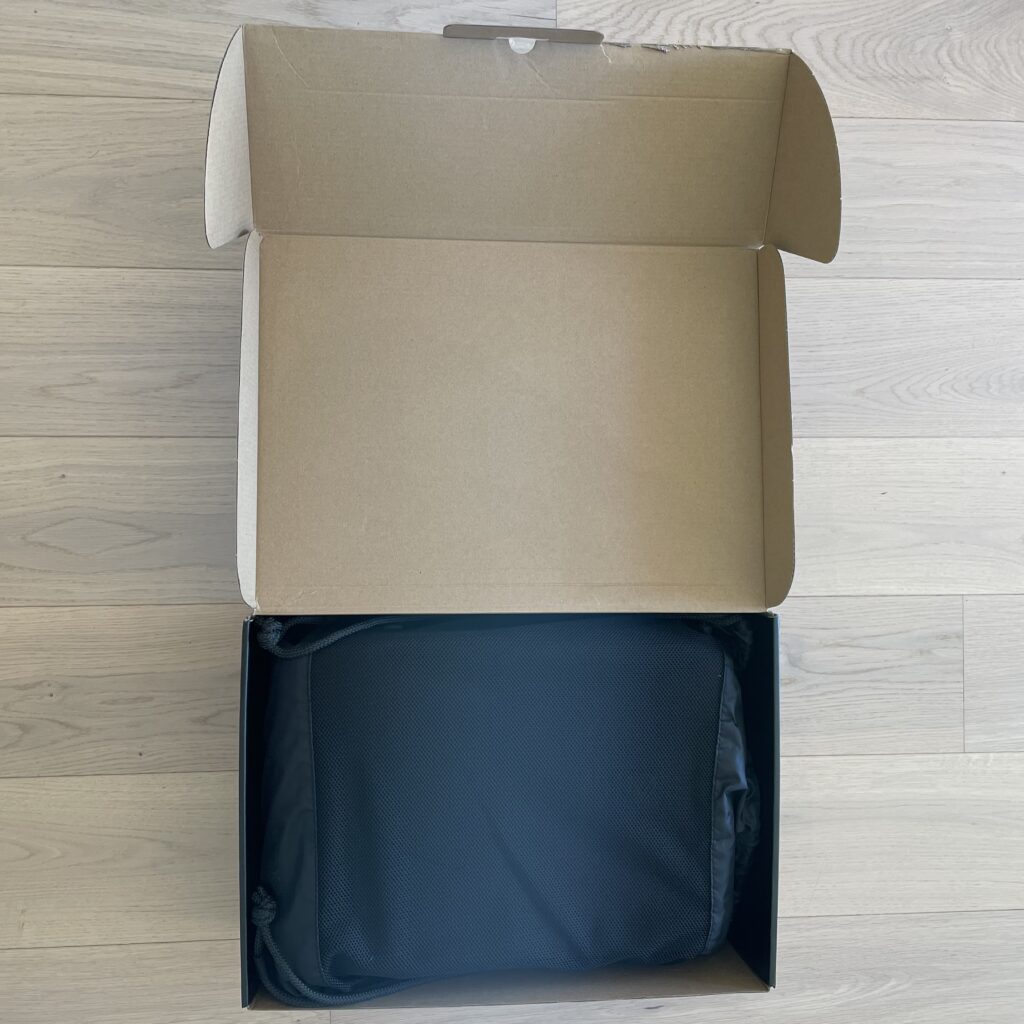
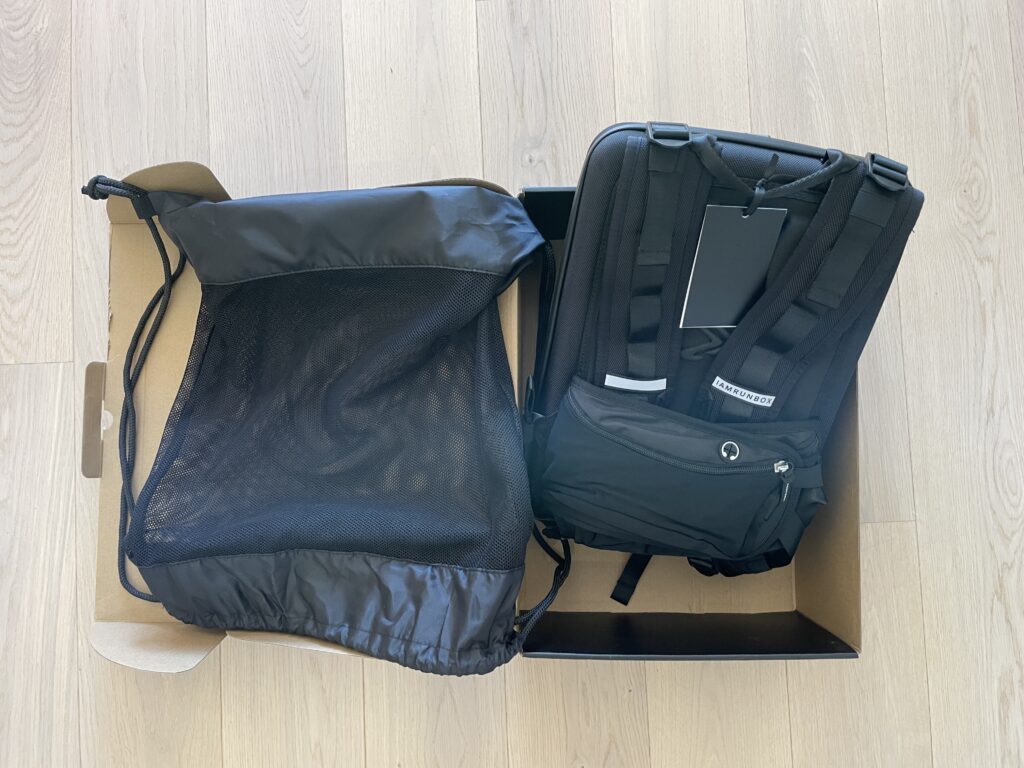
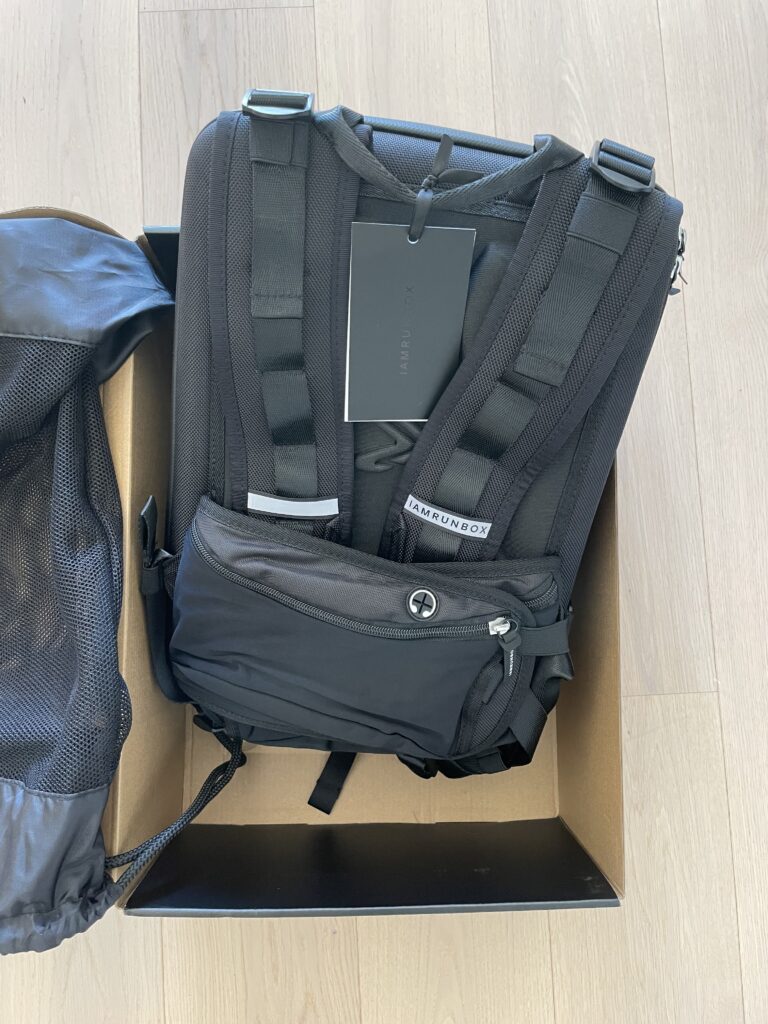
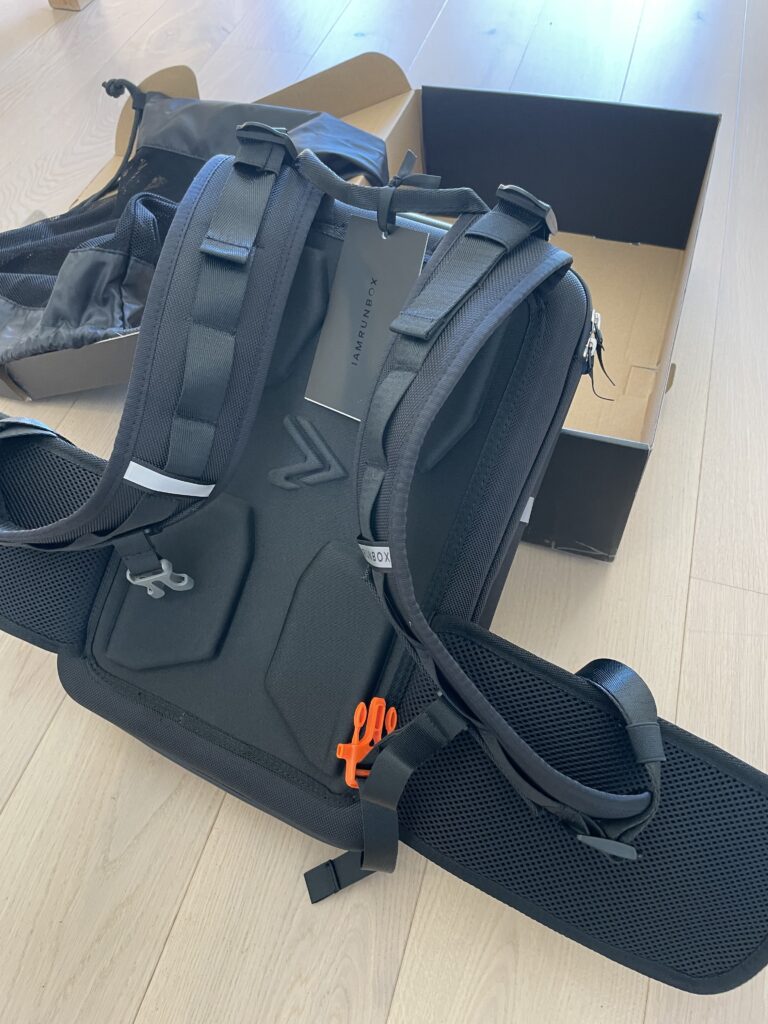
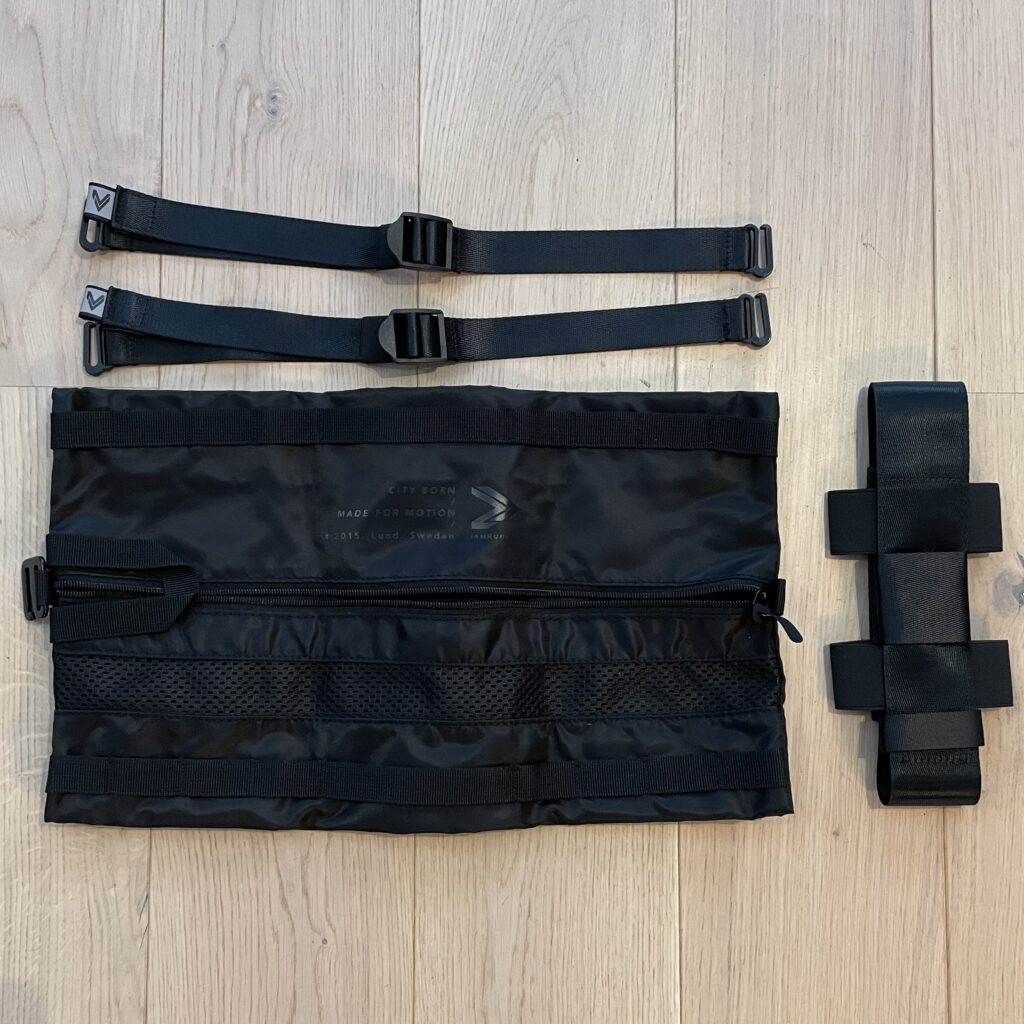
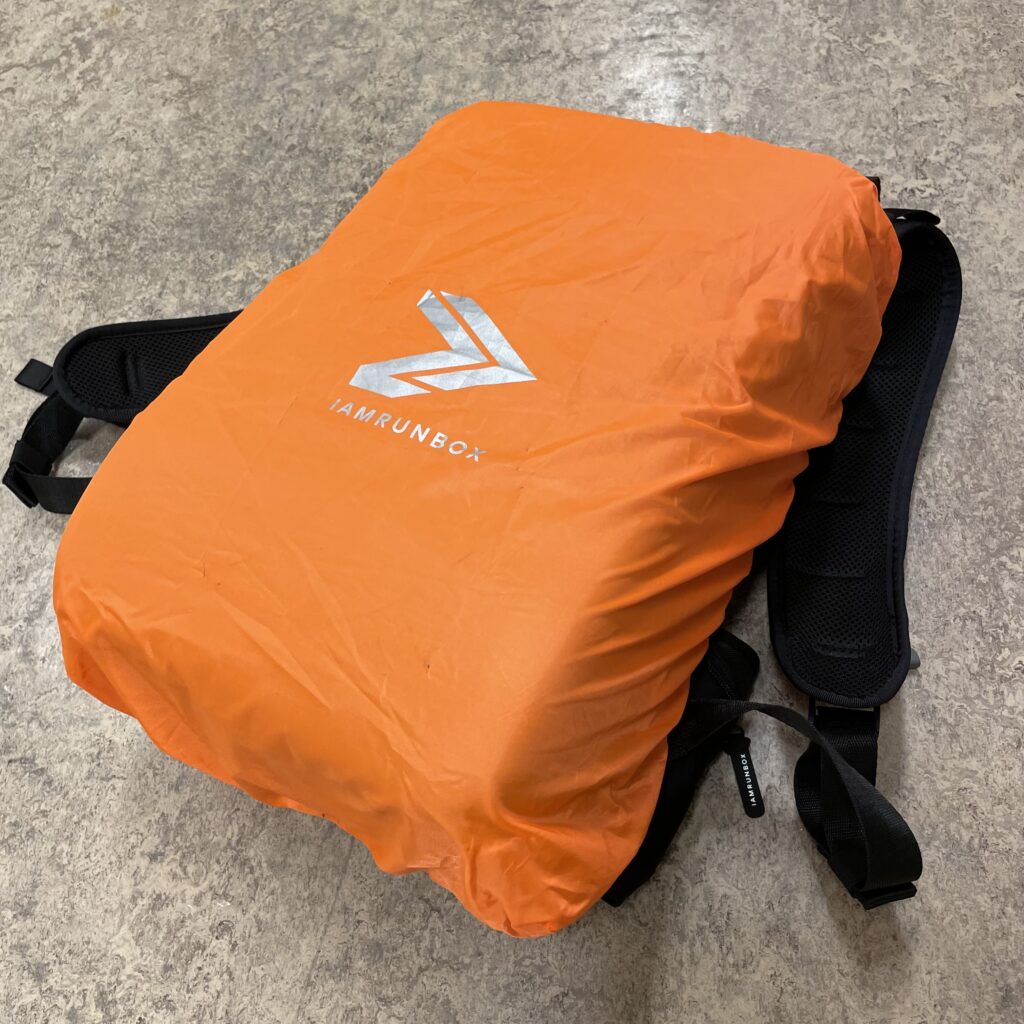
- Molle straps (2): Straps for extra capacity by attaching stuff to the outside of your backpack.
- Clothes folder: A stiff plastic sheet with folding instructions for the most space efficient packing.
- Space bag: 12 litre bag that you can attach to the outside of your backpack using molle straps. Perfect for carrying shoes.
- Water bottle holder: Turn any bottle into a handheld, or attach the bottle to your backpack.
- Packing organisers: Out of stock when I ordered, so I got a set of three packing cubes instead. Good for organising the stuff in your backpack.
- Rain cover: A simple cover that you pull over the backpack to shield it from rain.
- Laundry bag: Ventilated bag for carrying your dirty clothes.
Depending on your commute routine, and the facilities where you arrive, all of these can be practical add ons that complement the basic backpack. I don’t usually carry shoes on my commute runs, as I keep an extra pair at work. That means I don’t really use the space bag and the molle straps.
The packing cubes and the laundry bag, however, I use every single day. With the packing cubes I easily separate my extra running gear from my regular clothes. The laundry bag is even more self explanatory. At the end of the day, as I change back to running clothes to run home, I throw all my laundry in here. It’s nice to separate it from whatever clothing doesn’t need to be washed after a single use.
First Impressions
Opening the box, I had to immediate reactions:
- Wow, there’s a lot of stuff in here!
- The backpack is much smaller than I’d expected.
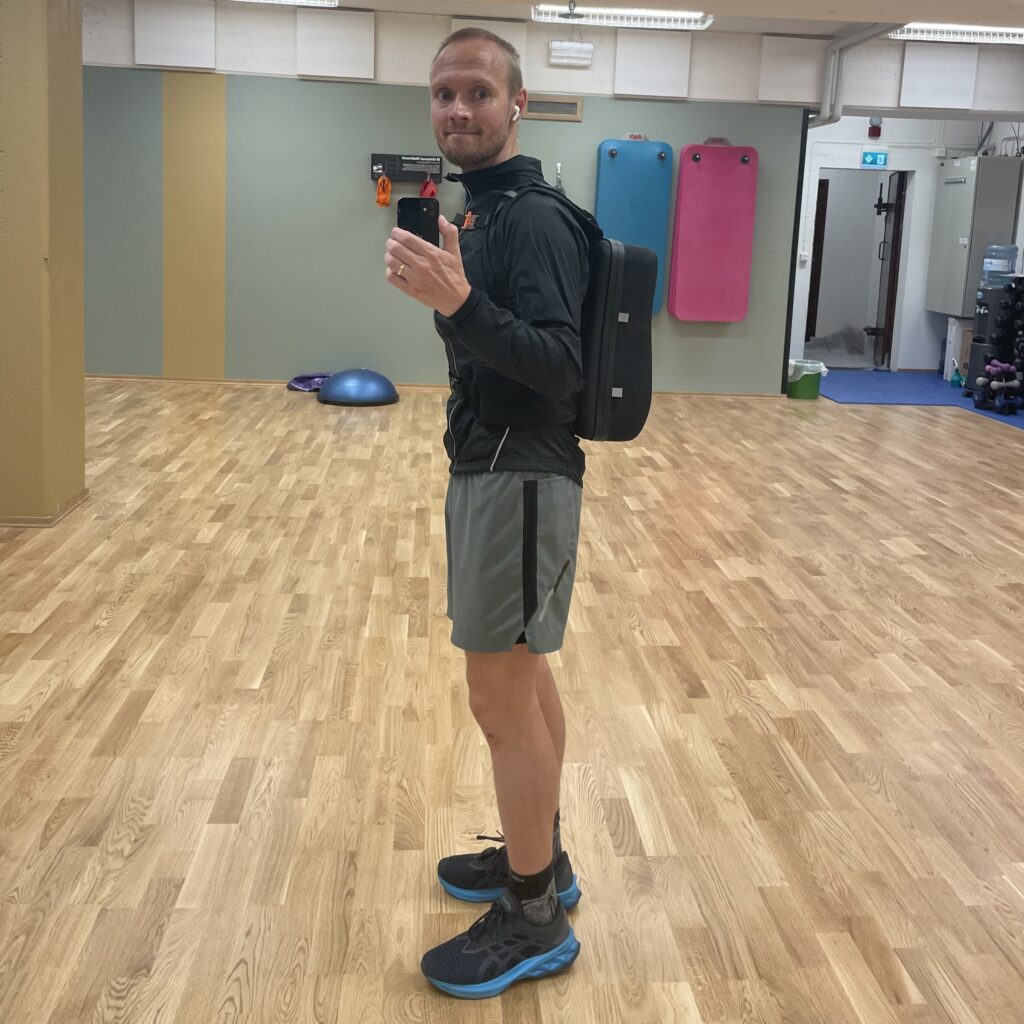
Unless you’ve studied each included “gadget” in detail before purchasing, you’re going to spend some time figuring out what everything is after unboxing. No worries, though, you’ll quickly familiarise yourself with each component.
Size Matters
The size of the backpack surprised me somewhat. Given everything I was supposed to be packing in there, I had expected something bulkier. But make no mistake, smaller is better here.
When it comes to run commuting, you want the smallest packing solution that will handle everything you need. If a Flipbelt does the trick, you don’t want to carry a backpack. But if you need to carry a laptop and a change, you need a backpack that accommodates it. And in my experience, that’s the baseline for the Backpack Pro 2.0.
The main reason this backpack can get away with being smaller than you’d expect, is its unorthodox design. Instead of being a traditional soft backpack, it is more akin to a small suitcase you carry on your back.
In other words, a box that you run with. A runbox.
This untraditional design comes with a few key benefits:
- Because it opens and closes like a suitcase, you can easily make the most out of the space. Picture that old cliche of someone sitting on their suitcase to close it, and you get an idea why that is.
- A suitcase is easier to compartmentalise than a soft backpack. Especially with the packing cubes, that makes it easier to separate your packings into different sections.
- With a more traditionally shaped backpack where you pack from the top, you often have to unpack everything to get a hold of what’s in the bottom. Here you can easily get to everything without having to unpack the entire backpack.
Quality Construction
Once you start to inspect the backpack, it instantly gives an impression of a solid, quality construction. The fabric on the various pads appears durable, but pliable and not stiff as to become uncomfortable. The zipper is well closed upon zipping, to prevent water from coming in even if you forgot to put on the rain cover.
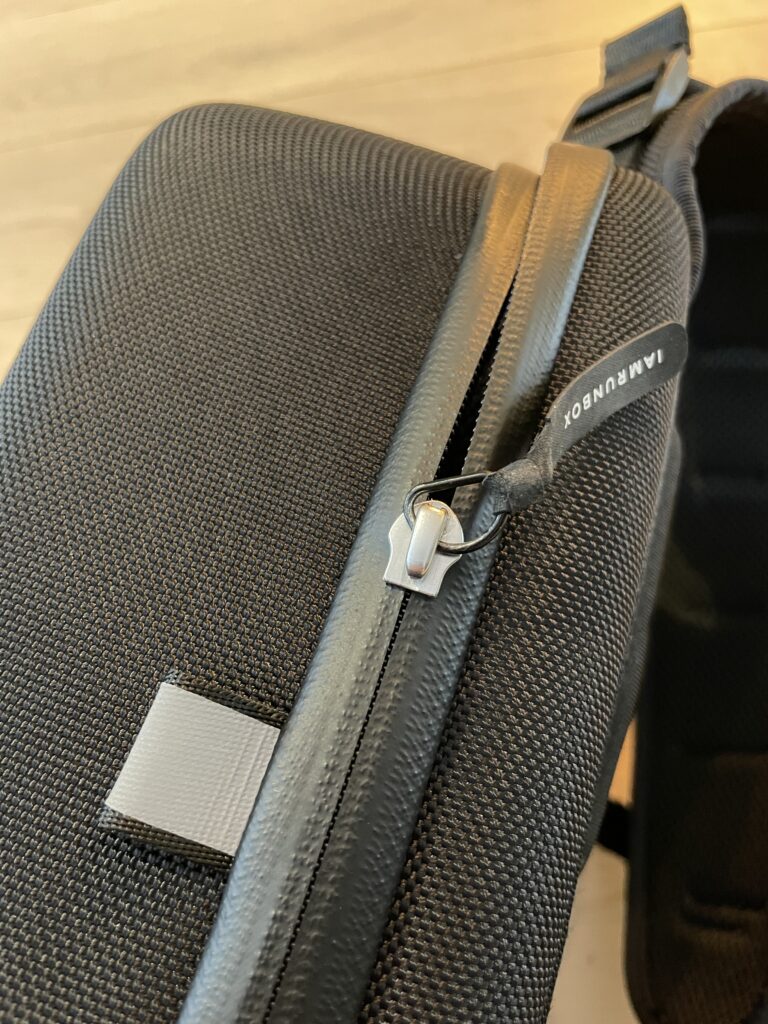
And the backpack itself, or the hardshell to be specific, is sturdy enough to take some serious mishandling. Case in point: On more than one occasion, I’ve left the backpack lying around on the floor after coming home. That apparently instantly makes it an attractive “launch pad” for a four year old running around the house.
Also worth noting here, is that everything is well padded in the appropriate places. Running with a suitcase does not intuitively seem like an attractive proposition. But the combination of limited size, generous back padding, broad and comfortable shoulder straps, and a load-bearing hip belt makes for an ergonomic combination.
Running Experience
Nailing down my setup took a bit of trial and error. For my first few commutes, I packed more than I needed. A basic tenet of run commuting is that you don’t carry more than what you absolutely need to carry.
So after a few runs, I realised that I could leave my shoes, belt and a towel at work. No point in carrying that back and forth. That means I ended up carrying the bare necessities:
- My laptop
- A full change of clothes for my workday
- Dry running socks and underwear for the run back home
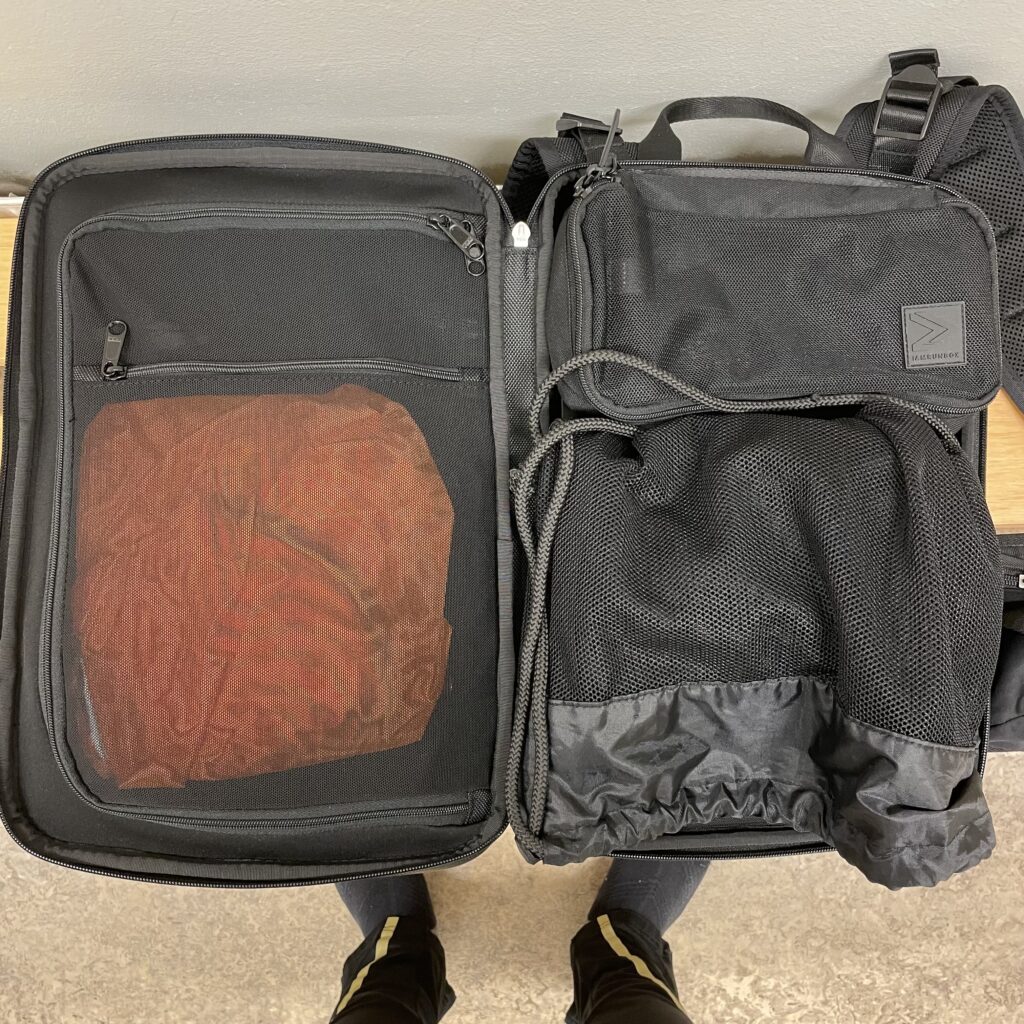
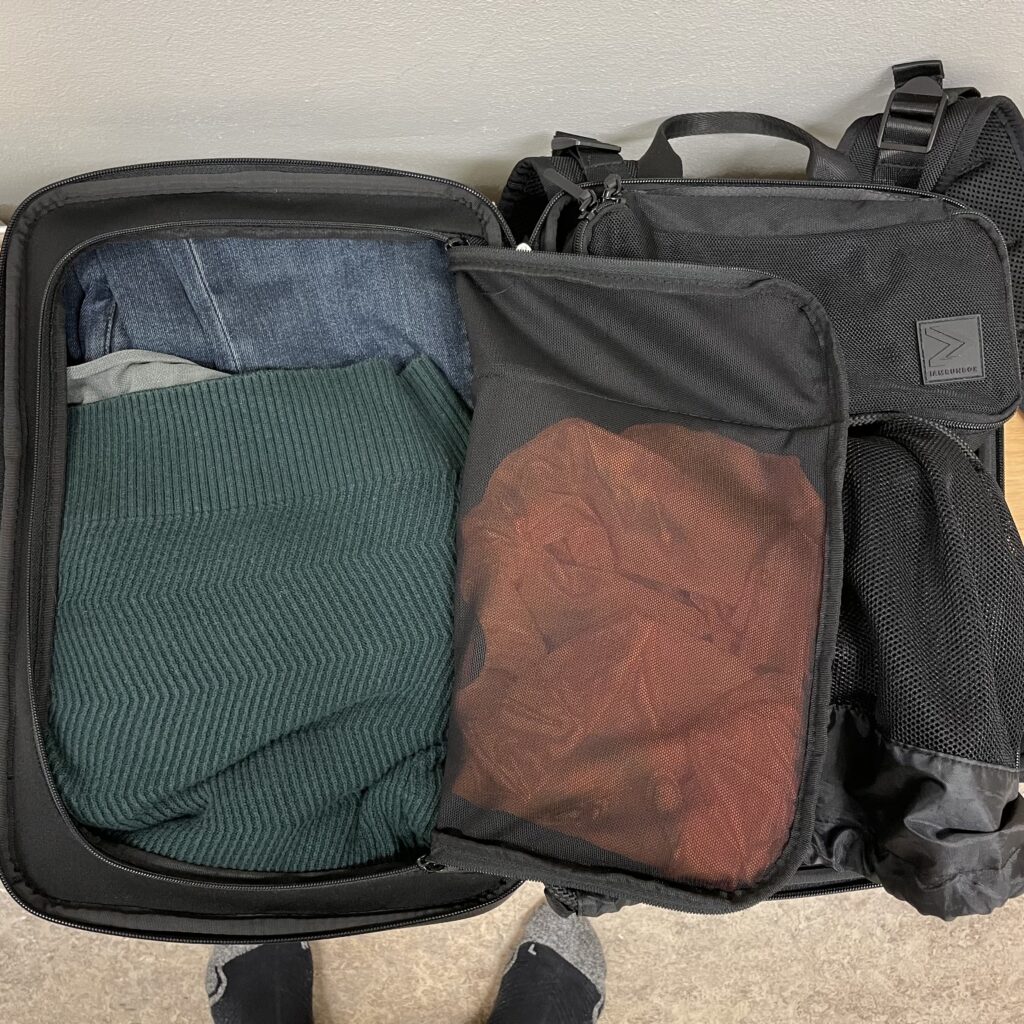
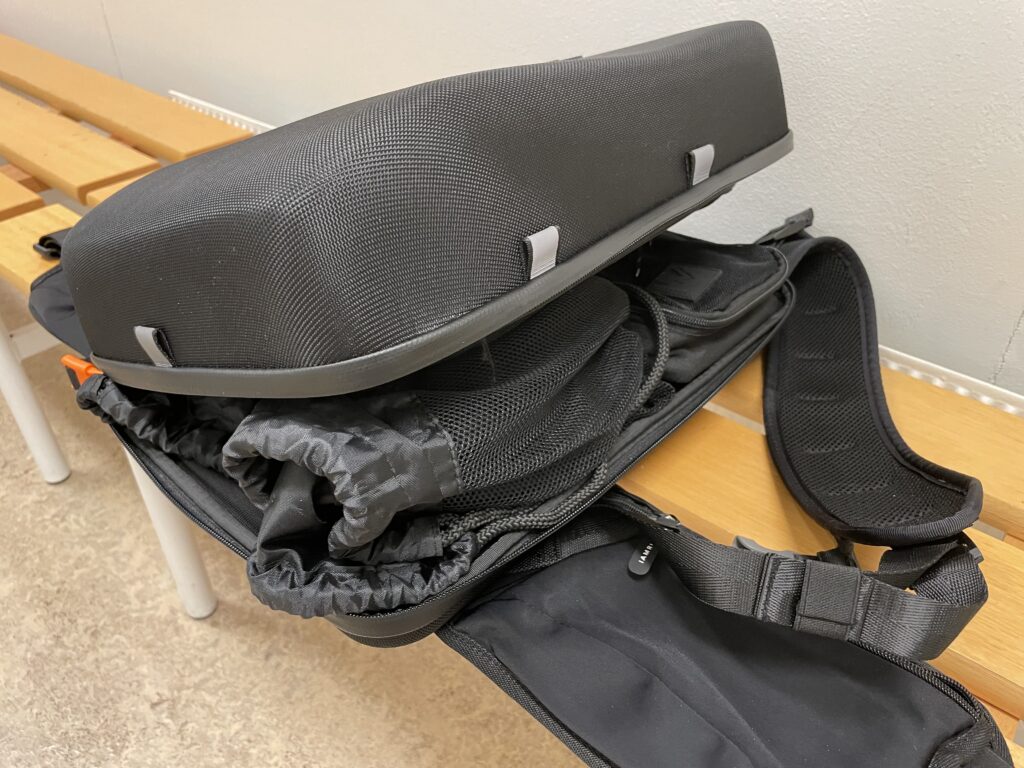
The entire rig, including the backpack itself and necessary trinkets like keys, phone, headphones and such, comes down to around 4.6 kilograms, or 10 lbs. A bit of extra weight to carry while running, certainly. But not a frightening number, even for a relatively small and lightweight runner like myself.
Fit and Bounce
Adjusting the various straps to ensure a good fit is simple and convenient. And, for my first few runs, I probably went a bit overboard. I tightened the shoulder and sternum straps as much as I possibly could, to ensure absolutely no bounce. And, conversely, I probably didn’t tighten the hip belt enough.
IAMRUNBOX advertise that your hipbelt should carry about 60-80% of the total weight. Setting it up the way that I did, I don’t think that was the case at all. A much larger portion of the weight was on my shoulders. The result was that my shoulders, and clavicles became sore and bruised.
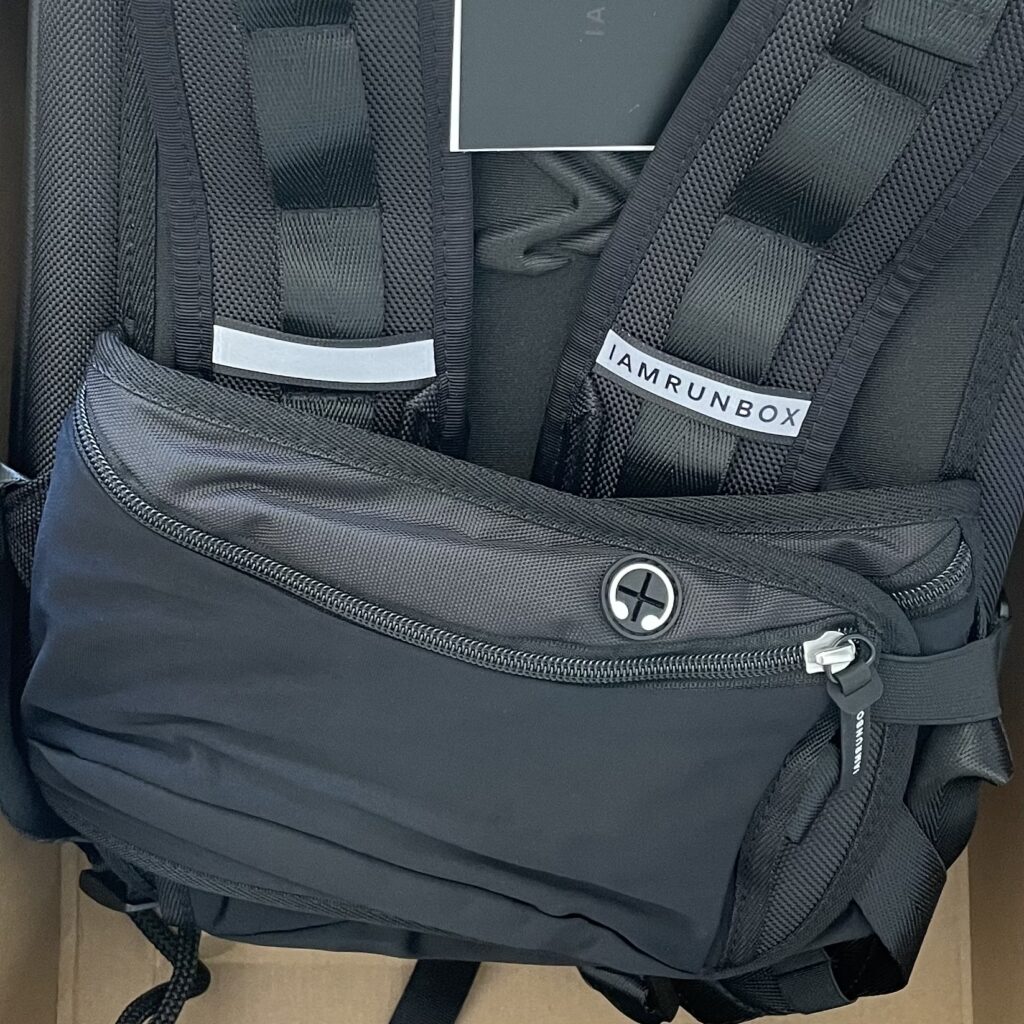
Of course, there was absolutely no bounce what-so-ever, so that was good. Eventually, though, I adjusted the straps. To ensure more weight on my hip, and less on my shoulders. And it worked well enough, and I’m more comfortable with the backpack now.
If there’s one complaint to make about the Backpack Pro 2.0, it’s the lockdown of the shoulder straps. No matter how tight or loose the straps start out, there’s a bit of slippage as you’re running.
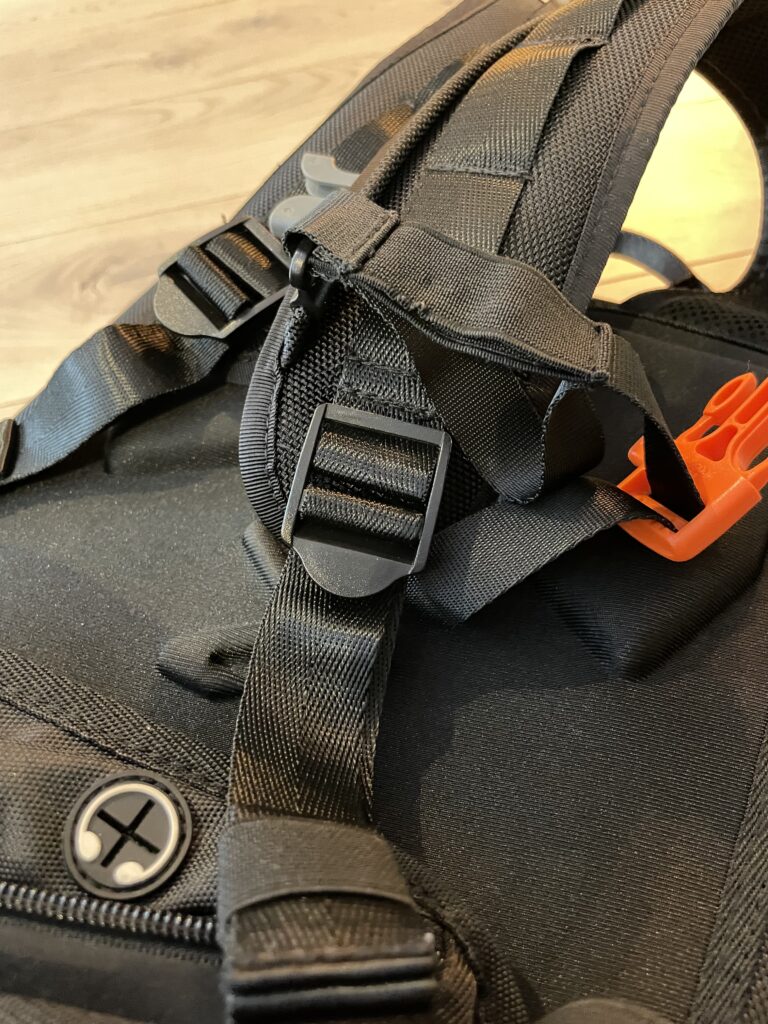
Once you’re accustomed to carrying the bulk of the weight on your hips, it’s not that big of a deal. More of a minor nuisance. But, still, one I would’ve liked to be without.
Gait and Movement
When you add weight, your running gait will change. Your movement will be more restricted, and you will have to run slower than normal to stay at the same effort level.
General rules aside, I will say that it took between five to ten runs with the Backpack Pro 2.0 before I started to get used to running with the added weight. The backpack itself doesn’t restrict your gait or range of motion, which is good. But the extra weight means extra load. So when I, at first, tried to retain my usual movement pattern, I found that my calves bore the brunt of it.
After a few runs, however, I naturally adjusted my gait towards less vertical oscillation. That means less movement in the vertical plane–or less jumping up and down, to use plain terms.
Now I find that I can maintain more or less the same pace as I do on my regular easy runs without the backpack, on account of the slightly altered movement pattern. What’s interesting about this is whether or not it will, in time, translate to more efficient running without the backpack.
I don’t have the answer to that yet. But what I can say is that I don’t feel that doing most of my easy running with a backpack has affected my other runs negatively in any way. To the contrary, my fitness during this period has improved significantly, and at least in line with what I’d expect given my current training volume.
Durability
After running around 500 kilometres, or 300 miles, with it, the backpack shows no visible signs of wear or tear. Beyond a few dents in the foam where my laptop resides, the entire backpack and the other components still look close to new.
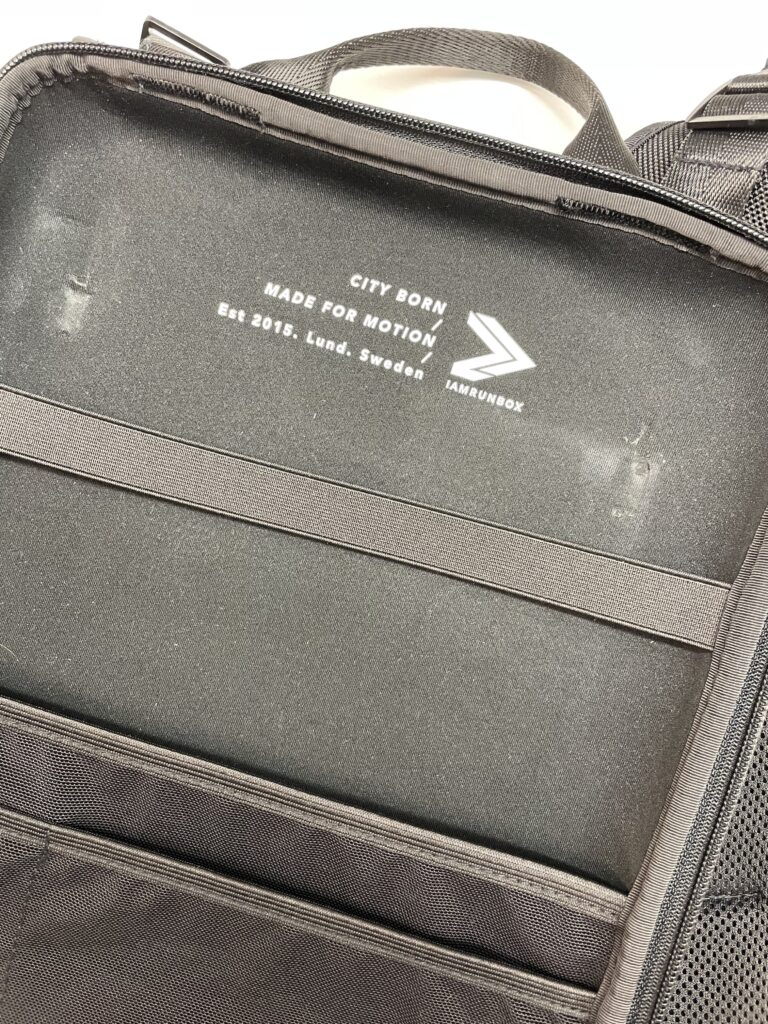
The aforementioned slippage on the shoulder straps has neither improved nor worsened during the review period. I would expect this problem to exacerbate with use, but so far there are no signs indicating that it will.
All in all, my impression is that IAMRUNBOX have created a product that is built to last. Which is, of course, very much in line with their corporate vision of contributing to reducing your carbon footprint.
Verdict on The Backpack Pro 2.0 from IAMRUNBOX
This is a premium option. Together with the wide range of accessories, it is everything you need to maximise the comfort of your commute runs. My research ahead of purchasing this backpack, as well as my own experiences has convinced me: For runners who commute regularly, it is probably the best option.
It is tailor made to optimise your run commute. And it does that exceptionally well.
If you’re just looking for a casual option that can double as a backpack for your commutes, there are probably better options out there. In fact, IAMRUNBOX have a whole range of options.
Like this?
Let me know by sending me an email at lc@run161.com.
